Reasons to Use Artificial Grass for a Padel Court
Padel is a racquet sport with Mexican origins that is becoming increasingly well-known worldwide. It is played on a court surrounded by glass walls and wire mesh, a special cross between squash and tennis. As the sport evolves, the need for an appropriate playing surface, particularly using artificial grass for play areas, becomes increasingly vital. Although traditional clay and grass courts are still in use, artificial grass is becoming the preferred option for padel court owners and players for several reasons.
1)Look’s Natural
Artificial grass has advanced significantly, and even sports artificial grass now resembles real, well-kept grass. Because of their variety of green tones and light-reflecting properties, we employ unique fibers that have a genuine appearance. You do have the best of both worlds because it won't go spotty, turn brown in the winter, or require mowing, unlike real grass.

2)Enhanced Player Experience
The use of artificial grass ultimately improves the player experience on padel courts. Players can concentrate on having fun and honing their skills because the playing surface is steady and predictable, there's less chance of injury, and pace and bounce are customizable.
3)Speed and Ball Bounce
On your padel court, artificial turf gives you control over the ball's bounce and speed. You can alter the surface to suit your preferred bounce and speed. With natural grass, which could vary in its qualities depending on weather and upkeep, this degree of control is difficult to attain.

4)Incredibly Durable
Artificial grass is a great option for padel courts because of its extreme durability and ability to tolerate severe use. It is made to withstand player movement and foot activity during games. Over time, natural grass can get muddy, uneven, and worn out, especially in places with heavy traffic. These are problems you won't have with artificial grass. Years pass and it still looks great, providing a steady and dependable playing surface.
5)Weather Resistance
Natural grass courts are very dependent on the climate. Severe heat can dry them out and make the grass wither, while rain can make them waterlogged and unplayable. Conversely, artificial grass is resistant to weather. It resists becoming muddy in the rain and drying up in the intense heat. This implies that you won't have to worry about your padel court's condition when using it in different weather situations.
6) Consistent Playing Surface
Natural grass courts are highly influenced by the weather. While rain can make them soggy and unusable, extreme heat can dry them out and cause the grass to wither. Artificial grass, on the other hand, is weatherproof. It doesn't muck up in the rain or dry out in the extreme heat. This suggests that you won't have to be concerned about the state of your padel court when utilizing it in various weather conditions.
7) Cost Effective
Artificial grass may cost more to install initially than natural grass, but there are significant long-term benefits. The entire cost of owning and running a padel court is decreased by the lesser maintenance requirements, such as the lack of weeds, watering, and lawn mowing. These savings have the potential to eventually balance the original outlay and produce a more affordable solution.

8) Low Maintenance
Artificial grass's reduced care needs are a major justification for using it on padel courts. Natural grass courts require a lot of maintenance, such as weeding, fertilizing, watering, and mowing. Conversely, artificial grass does away with the majority of these chores. You can save time and money by not having to mow or weed when you use synthetic grass. The court can be used all year round, in any kind of weather, because you don't have to bother about watering.
9) Reduce Injury Risk
Player safety is a priority in the design of artificial grass for padel courts. With rapid motions and sudden pauses, it offers a cushioning effect that might lessen the chance of injuries like twisted ankles. On the other hand, natural grass may be harsh and hard, making injuries more likely as players move quickly across the court.

10) Quick Installation
Artificial grass usually requires less time and effort to install than genuine grass. As a result, you may open your padel court sooner and let players use the space without having to wait a long time. Fast installation can be especially helpful for companies trying to draw in more clients or players who are ready to get started.
11) UV Resistance
Even in direct sunshine, artificial turf retains its color and is resistant to ultraviolet radiation. This means that despite being used for several sweltering summers, it will retain its vibrant hue from when it was first installed.
Also, Read:-
A Step-By-Step Guide To Laying Artificial Grass On Concrete
Artificial Grass Cost Estimation For Your Artificial Lawn
Top 10 Things To Know Before You Buy Artificial Turf For Dogs And Pets
12)Low Allergenic Impact
For those who have allergies to grass, artificial grass can be a great alternative. Natural grass may emit pollen, which might irritate allergy sufferers. This problem is resolved with artificial grass, which offers a playing surface that is appropriate for a larger group of individuals, including those who have allergies.
13)Versatility
Artificial grass isn't just for padel fields. It is a versatile option because it may be utilized for a range of sports and recreational surfaces. Facilities that wish to provide several sports or activities in one area may find this adaptability useful.
14) Better For Club Owners
Artificial grass has a lot to offer club owners. Its year-round use, uniform playing field, and cheap maintenance requirements can draw in more players and members. Long-term cost reductions are another benefit that makes it a wise investment.
Also, if you are looking for good options for Rugs, Carpets, and Vinyl Flooring please click below to visit:





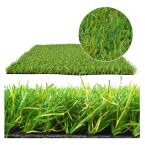

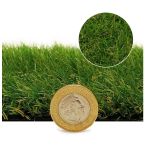


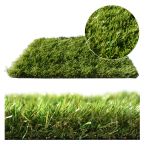


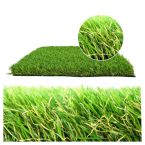
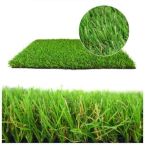

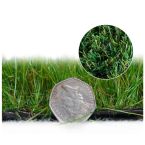
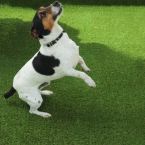






 >
>